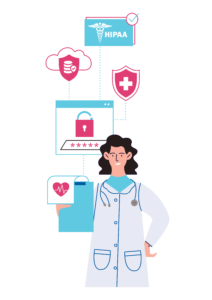HIPAA and HITRUST are two frameworks that are commonly compared because they are used in the healthcare industry.
HIPAA Omnibus Rule
The HIPAA Omnibus Rule refers to a set of expansions and modifications to the existing Health Insurance Portability and Accountability Act (HIPAA) regulations, which were finalized and implemented in 2013. This comprehensive update was designed to strengthen the privacy and security protections for health information established under HIPAA, addressing gaps and ensuring that the regulations keep pace with changes in the way healthcare is delivered and information is managed.
Overview of the HIPAA Omnibus Rule 2013
The HIPAA Omnibus Rule 2013 was released to enhance a patient’s privacy protections, expand individuals’ rights to their health information, and strengthen the government’s ability to enforce the law. Officially titled the “Modifications to the HIPAA Privacy, Security, Enforcement, and Breach Notification Rules under the Health Information Technology for Economic and Clinical Health Act and the Genetic Information Nondiscrimination Act; Other Modifications to the HIPAA Rules,” the rule’s issuance marked a significant overhaul in HIPAA regulation.
HIPAA Omnibus Rule Mandate
The HIPAA Omnibus Rule mandate encompasses several critical requirements:
- Extension of Requirements to Business Associates: Previously, HIPAA rules primarily applied to covered entities such as health plans, health care clearinghouses, and health care providers. The Omnibus Rule extended these requirements to business associates and their subcontractors, making them directly liable for compliance with certain HIPAA Privacy and Security provisions.
- Enhanced Patient Privacy Protections: The rule enhanced protections against the use and disclosure of protected health information (PHI) for marketing and fundraising purposes and prohibited the sale of PHI without individual authorization.
- Strengthened Rights to Electronic Health Information: It improved patients’ ability to access their health information and restricted how information is used and disclosed for marketing and fundraising.
- Breach Notification Standard: The rule introduced a more objective standard for assessing whether a breach of unsecured PHI requires notification, focusing on the probability that PHI has been compromised based on a risk assessment.
HIPAA Omnibus Rule Changes
The changes introduced by the HIPAA Omnibus Rule were extensive and designed to provide robust protection of health information while addressing the dynamic nature of electronic health record systems and exchange practices. Significant changes include:
- Notification Requirements: The rule clarified and tightened the obligations on covered entities and business associates regarding the notification of breaches, which requires timely notifications to affected individuals, the Secretary of Health and Human Services, and, in cases of breaches affecting more than 500 individuals, the media.
- Penalty Structure: It revised the penalty structure for non-compliance based on the level of negligence, establishing a tiered penalty that increases with the level of culpability.
- Genetic Information: The rule expanded the definition of health information to include genetic information, prohibiting its use for underwriting purposes by health plans, including those that are part of the Group Health Plans.
Omnibus Final Rule
The Omnibus Final Rule consolidated all the updates into a single amendment to the existing regulations, reflecting ongoing governmental efforts to enhance patient privacy and security protections. By consolidating all updates, the final rule simplifies understanding and compliance for covered entities and business associates.
In summary, the HIPAA Omnibus Rule represents a critical evolution in the regulatory landscape of health information privacy and security. By expanding obligations to business associates, enhancing patient rights, and tightening the rules and penalties around health information breaches, the Omnibus Rule ensures that HIPAA keeps pace with the technological advancements and changes in the healthcare industry, reinforcing the framework that protects patient privacy and secures health information.







